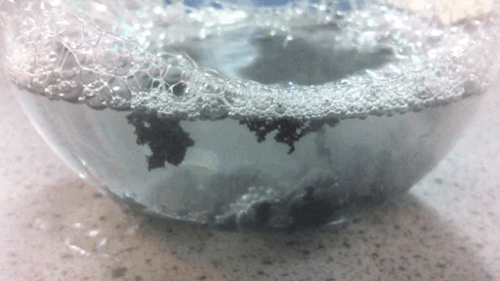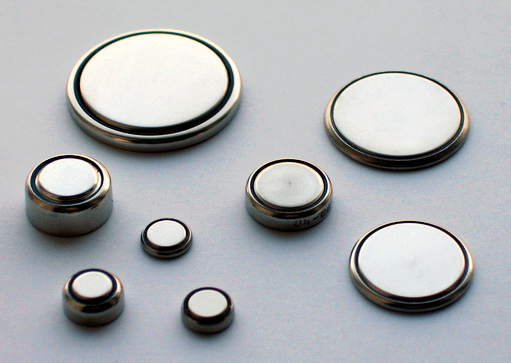8.3: Oxidation-Reduction (Redox) Reactions
- Page ID
- 288467
\( \newcommand{\vecs}[1]{\overset { \scriptstyle \rightharpoonup} {\mathbf{#1}} } \)
\( \newcommand{\vecd}[1]{\overset{-\!-\!\rightharpoonup}{\vphantom{a}\smash {#1}}} \)
\( \newcommand{\id}{\mathrm{id}}\) \( \newcommand{\Span}{\mathrm{span}}\)
( \newcommand{\kernel}{\mathrm{null}\,}\) \( \newcommand{\range}{\mathrm{range}\,}\)
\( \newcommand{\RealPart}{\mathrm{Re}}\) \( \newcommand{\ImaginaryPart}{\mathrm{Im}}\)
\( \newcommand{\Argument}{\mathrm{Arg}}\) \( \newcommand{\norm}[1]{\| #1 \|}\)
\( \newcommand{\inner}[2]{\langle #1, #2 \rangle}\)
\( \newcommand{\Span}{\mathrm{span}}\)
\( \newcommand{\id}{\mathrm{id}}\)
\( \newcommand{\Span}{\mathrm{span}}\)
\( \newcommand{\kernel}{\mathrm{null}\,}\)
\( \newcommand{\range}{\mathrm{range}\,}\)
\( \newcommand{\RealPart}{\mathrm{Re}}\)
\( \newcommand{\ImaginaryPart}{\mathrm{Im}}\)
\( \newcommand{\Argument}{\mathrm{Arg}}\)
\( \newcommand{\norm}[1]{\| #1 \|}\)
\( \newcommand{\inner}[2]{\langle #1, #2 \rangle}\)
\( \newcommand{\Span}{\mathrm{span}}\) \( \newcommand{\AA}{\unicode[.8,0]{x212B}}\)
\( \newcommand{\vectorA}[1]{\vec{#1}} % arrow\)
\( \newcommand{\vectorAt}[1]{\vec{\text{#1}}} % arrow\)
\( \newcommand{\vectorB}[1]{\overset { \scriptstyle \rightharpoonup} {\mathbf{#1}} } \)
\( \newcommand{\vectorC}[1]{\textbf{#1}} \)
\( \newcommand{\vectorD}[1]{\overrightarrow{#1}} \)
\( \newcommand{\vectorDt}[1]{\overrightarrow{\text{#1}}} \)
\( \newcommand{\vectE}[1]{\overset{-\!-\!\rightharpoonup}{\vphantom{a}\smash{\mathbf {#1}}}} \)
\( \newcommand{\vecs}[1]{\overset { \scriptstyle \rightharpoonup} {\mathbf{#1}} } \)
\( \newcommand{\vecd}[1]{\overset{-\!-\!\rightharpoonup}{\vphantom{a}\smash {#1}}} \)
Learning Objectives
- To identify oxidation and reduction in a redox reaction.
- To identify oxidizing agents and reducing agents.
When zinc metal is submerged into a quantity of aqueous \(\ce{HCl}\), the following reaction occurs (Figure \(\PageIndex{1}\)):
\[\ce{Zn (s) + 2HCl (aq) → H2 (g) + ZnCl2(aq)} \label{eq:1}\]

Because some of the substances in this reaction are aqueous, we can separate them into ions:
\[\ce{Zn (s) + 2H^{+} (aq) + 2Cl^{−} (aq) → H2(g) + Zn^{2+} (aq) + 2Cl^{−} (aq)} \nonumber\]
Viewed this way, the net reaction seems to be a charge transfer between zinc and hydrogen atoms. (There is no net change experienced by the chloride ion.) In fact, electrons are being transferred from the zinc atoms to the hydrogen atoms (which ultimately make a molecule of diatomic hydrogen), changing the charges on both elements.
To understand electron-transfer reactions like the one between zinc metal and hydrogen ions, chemists separate them into two parts: one part focuses on the loss of electrons, and one part focuses on the gain of electrons. The loss of electrons is called oxidation. The gain of electrons is called reduction. Because any loss of electrons by one substance must be accompanied by a gain in electrons by something else, oxidation and reduction always occur together. As such, electron-transfer reactions are also called oxidation-reduction reactions, or simply redox reactions. The atom that loses electrons is oxidized, and the atom that gains electrons is reduced. Also, because we can think of the species being oxidized as causing the reduction, the species being oxidized is called the reducing agent, and the species being reduced is called the oxidizing agent.
Because batteries are used as sources of electricity (that is, of electrons), all batteries are based on redox reactions.
Example \(\PageIndex{1}\): Silver Ions
\[\ce{3 Ag^{+} + Al → 3 Ag + Al^{3+}} \nonumber\]
Identify the substance oxidized, substance reduced, reducing agent and reducing agent.
Solution
- The substance oxidized is the reactant that had undergone oxidation, the one for which the charge increased: Al
- The substance reduced is the reactant that had undergone reduction, the one for which the charge decreased: Ag+
- The reducing agent is the same as the substance oxidized: Al
- The oxidizing agent is the same as the substance reduced: Ag+
Exercise \(\PageIndex{1}\)
Ca2+ + 2K → Ca + 2K+
Identify the substance oxidized, substance reduced, reducing agent and reducing agent.
- Answer
-
Reduction: Ca2+ → Ca
Oxidation: K → K+
- The substance oxidized is the reactant that had undergone oxidation (increased charge): K
- The substance reduced is the reactant that had undergone reduction (decreased charge): Ca2+
- The reducing agent is the same as the substance oxidized: K
- The oxidizing agent is the same as the substance reduced: Ca2+
Potassium has been used as a reducing agent to obtain various metals in their elemental form.
To Your Health: Redox Reactions and Pacemaker Batteries
All batteries use redox reactions to supply electricity because electricity is basically a stream of electrons being transferred from one substance to another. Pacemakers—surgically implanted devices for regulating a person’s heartbeat—are powered by tiny batteries, so the proper operation of a pacemaker depends on a redox reaction.
Pacemakers used to be powered by NiCad batteries, in which nickel and cadmium (hence the name of the battery) react with water according to this redox reaction:
\[\ce{Cd(s) + 2NiOOH(s) + 2H2O(ℓ) → Cd(OH)2(s) + 2Ni(OH) 2(s)} \nonumber\]
The cadmium is oxidized, while the nickel atoms in NiOOH are reduced. Except for the water, all the substances in this reaction are solids, allowing NiCad batteries to be recharged hundreds of times before they stop operating. Unfortunately, NiCad batteries are fairly heavy batteries to be carrying around in a pacemaker. Today, the lighter lithium/iodine battery is used instead. The iodine is dissolved in a solid polymer support, and the overall redox reaction is as follows:
\[\ce{2Li(s) + I2(s) → 2LiI (s)} \nonumber\]
Lithium is oxidized, and iodine is reduced. Although the lithium/iodine battery cannot be recharged, one of its advantages is that it lasts up to 10 years. Thus, a person with a pacemaker does not have to worry about periodic recharging; about once per decade a person requires minor surgery to replace the pacemaker/battery unit. Lithium/iodine batteries are also used to power calculators and watches.

Oxidation and reduction can also be defined in terms of changes in composition. The original meaning of oxidation was “adding oxygen,” so when oxygen is added to a molecule, the molecule is being oxidized. The reverse is true for reduction: if a molecule loses oxygen atoms, the molecule is being reduced. For example, the acetaldehyde (\(\ce{CH3CHO}\)) molecule takes on an oxygen atom to become acetic acid (\(\ce{CH3COOH}\)).
\[\ce{2CH3CHO + O2 → 2CH_3COOH}\]
Thus, acetaldehyde is being oxidized.
Similarly, reduction and oxidation can be defined in terms of the gain or loss of hydrogen atoms. If a molecule adds hydrogen atoms, it is being reduced. If a molecule loses hydrogen atoms, the molecule is being oxidized. For example, in the conversion of acetaldehyde into ethanol (\(\ce{CH3CH2OH}\)), hydrogen atoms are added to acetaldehyde, so the acetaldehyde is being reduced:
\[\ce{CH3CHO + H2 → CH3CH2OH}\]
| Process | Change in oxygen (some reactions) | Change in hydrogen (some reactions) |
|---|---|---|
| Oxidation | gain | lose |
| Reduction | lose | gain |
Example \(\PageIndex{2}\)
In each conversion, indicate whether oxidation or reduction is occurring.
- N2 → NH3
 →
→ 
 →
→ 
Solution
- Hydrogen is being added to the original reactant molecule, so reduction is occurring.
- Hydrogen is being removed from the original reactant molecule, so oxidation is occurring.
- Oxygen is being added to the original reactant molecule, so oxidation is occurring.
Exercise \(\PageIndex{2}\)
In each conversion, indicate whether oxidation or reduction is occurring.
- CH4 → CO2 + H2O
- NO2 → N2
- CH2=CH2 → CH3CH3
- Answer a:
-
Oxygen is being added. Oxidation is occurring.
- Answer b:
-
Oxygen is being removed. Reduction is occurring.
- Answer a:
-
Hydrogen is being added. Reduction is occurring.
Concept Review Exercises
-
Give two different definitions for oxidation and reduction.
-
Give an example of each definition of oxidation and reduction.
Answers
-
Oxidation is the loss of electrons or the addition of oxygen; reduction is the gain of electrons or the addition of hydrogen.
-
Zn → Zn2+ +2e− (oxidation); C2H4 + H2 → C2H6 (reduction) (answers will vary)
Key Takeaway
Chemical reactions in which electrons are transferred are called oxidation-reduction, or redox, reactions. Oxidation is the loss of electrons. Reduction is the gain of electrons. Oxidation and reduction always occur together, even though they can be written as separate chemical equations.
Exercises
-
Identify the oxidizing and reducing agents.
- 3Mg + 2AlCl3 → 2Al + 3MgCl2
- H2O2 + H2 → 2H2O
-
Identify the oxidizing and reducing agents.
- 2C2H6 + 7O2 → 4CO2 + 6H2O
- 2K + 2H2O → 2KOH + H2
Answers
1.
a. oxidizing agent: AlCl3; reducing agent: Mg
b. oxidizing agent: H2O2; reducing agent: H2

